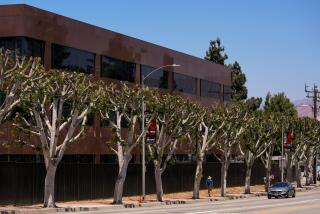When to Prune Trees
- Share via
Winter is a good time to prune most landscape trees. You can do it at other times, but just make sure not to prune trees in the spring during their growth period--from the time the buds start to swell until the young leaves have reached their full size--say tree specialists. Trees’ budding and bloom times vary.
In general, avoid pruning landscape trees in mid- to late summer (July, August and September), unless it’s very light, because you can induce an off-season growth spurt, which can leave some species, such as ficus, vulnerable to freeze damage. Hot-weather pruning can also delay or shorten dormancy for deciduous trees and is especially damaging to eucalyptus and pines.
Fruit trees require different pruning techniques than landscape trees. Each type has its own special requirements that should be investigated beforehand.
Here are some guidelines for pruning landscape trees common in Orange County:
CONIFERS
Conifers and certain other trees should be pruned in November, December, January or February. Such trees include:
* Cedars
* Cypress
* Pines
* Redwoods
* Eucalyptus
DECIDUOUS
Most deciduous trees should be pruned during their dormant period after leaves have fallen, which is usually November, December or January. Such trees include:
* Ash (Fraxinus species)
* Birch (Betula species)
* Cape chestnut (Calodendrum capense)
* Chinese elm (Ulmus parvifolia)
* Chinese pistache (Pistacia chinensis)
* Fruitless mulberry (Morus alba)
* Ginkgo (Ginkgo biloba)
* Italian alder (Alnus cordata)
* Maple
* Sweet gum (Liquidambar styraciflua)
* Sycamore
FLOWERING TREES
Prune flowering trees when they are dormant, if they are deciduous, or immediately after flowering is completed, if they are evergreen. For those trees that bloom when they are leafless, in most cases wait until after they finish flowering. Flowering trees include:
* Acacias (various species)
* Bradford pear (Pyrus calleryana, several cultivars), which blooms while leafless
* Camellia Japonica
* Cape chestnut (Calodendrum capense)
* Cassia
* Chinese flame tree (Koelreuteria bipinnata)
* Coral trees (Erythrina caffra and other species), which bloom while leafless
* Crape myrtle
* Empress tree (Paulownia tomentosa), which blooms while leafless
* Firewheel trees (Stenocarpus sinuatus)
* Jacaranda
* Lemon bottlebrush (Callistemon citrinus)
* New Zealand Christmas tree
* Purple orchid tree (Bauhinia variegata)
* Saucer magnolia (Magnolia soulangiana), which blooms while leafless
* Silk tree/mimosa ( Albizia julibrissin)
* Southern magnolia (Magnolia grandiflora)
* Tipu tree (Tipuana tipu)
BROADLEAF EVERGREENS
Broadleaf evergreens should be pruned October through March or May or June. Such trees include:
* Bronze loquat (Eriobotrya deflexa)
* Camphor tree (Cinnamomum camphora)
* Carrot wood (Cupaniopsis anacardioides)
* Eucalyptus species
* Kaffir plum (Harpephyllum caffrum)
* Oaks, including coast live oak (Quercus agrifolia) and holly oak (Quercus ilex)
* Olive (Olea europaea)
* Ornamental figs (ficus species)
* Peppermint tree (Agonis flexuosa)
* Pittosporum species, such as Victorian box (Pittosporum undulatum)
* Toyon (Heteromeles arbutifolia)






